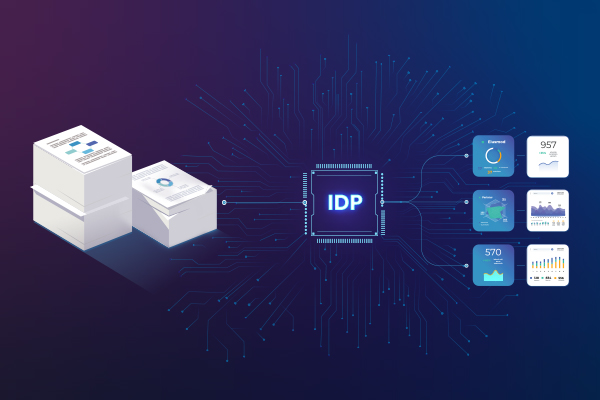
How AOTM is Leading the Regulatory Reporting with IDP and ML?
Regulatory reporting is one of the most demanding tasks in industries like banking, insurance, and finance. Endless paperwork, tight deadlines, and zero tolerance for errors turn it into an exhausting process. A single mistake could lead to costly fines or even damage to a company’s hard-earned reputation. But the days of manual data extraction and error-prone processes are fading. The future of regulatory reporting lies in automation, and companies are now discovering the power of Intelligent Document Processing (IDP) solutions with AI OCR to streamline these tasks. AOTM’s Intelligent Automation Platform is at the forefront of this revolution, offering cutting-edge machine learning models with 99.99% accuracy in data extraction that completely transform how businesses manage regulatory reporting. Let’s take a closer look at how Intelligent Document Processing (IDP) solutions, AI OCR and real-time machine learning models are enabling organizations to reduce costs, improve accuracy, and remain compliantwith ease—all while taking the burden off their shoulders. Why is Regulatory Reporting So Painful? Let’s face it—regulatory reporting has traditionally been a headache. Whether it’s compliance documentation, financial disclosures, or legal reports, there are piles of data to sift through and compile. Add the ever-changing regulations and fast-approaching deadlines to the mix, and you have a recipe for operational chaos. Historically, regulatory reporting has depended on large teams of people manually extracting data from various documents—whether it’s invoices, legal contracts, or financial statements. This method is not only time consuming, but it’s also prone to human error, which can result in compliance issues, fines, or worse. But now, with the rise of Intelligent Document Processing (IDP)with AI OCR and real-time machine learning models, organizations can finally transform how they approach this cumbersome task. What is Intelligent Document Processing, and How Does It Help? Let’s break it down: Intelligent Document Processing (IDP) with AI OCR uses a combination of advanced technologies like AI, Machine Learning (ML), and Natural Language Processing (NLP) to automate the extraction, classification, and validation of data from various types of documents—whether structured, semi-structured, or unstructured. Here’s how IDP is transforming the regulatory reporting game: 1. Real-Time Data ExtractionRegulatory reporting typically involves gathering data from multiple sources and document types—everything from financial statements to legal contracts. AOTM’s IDP and AI OCR solution, powered by real-time machine learning models, makes this process completely automatic: No more manual entry: The system reads and extracts relevant information from documents in real-time, making it available instantly for regulatory reporting. Speed and efficiency: What used to take hours (or even days) can now be done in a matter of minutes with AI-driven automation. 2. Reducing Human Errors and Ensuring ComplianceManual data entry is error-prone, and in the world of regulatory reporting, even the smallest mistake can be costly. AOTM’s Intelligent Automation platform ensure: Fewer errors: Real-time machine learning models continuously learn and improve, resulting in high levels of accuracy and reducing the risk of human error. Better compliance: AOTM’s system flags any missing or incorrect information, ensuring that reports meet regulatory requirements and remain fully compliant. 3. Real-Time Machine Learning for AdaptabilityRegulatory requirements are constantly evolving. What was compliant one year might not be the next. With AOTM’s real-time machine learning models, businesses can adapt quickly: Dynamic learning: AOTM’s system continuously learns from new data and regulations, adapting in real time without requiring manual reprogramming. Faster response to change: As regulations change, AOTM’s platform updates in real-time, so businesses stay compliant with the latest standards. 4. Real-Time Insights and Audit TrailsWhen it comes to regulatory reporting, having a transparent, real-time view is essential. AOTM’s Intelligent Automation Platform offers: Complete audit trails: Every document, data point, and decision is tracked and recorded, offering transparency that can be easily reviewed during audits. Real-time insights: AOTM’s dashboards provide up-to-the-minute reporting and performance metrics, making it easy to monitor compliance status and reporting progress. AOTM’s Intelligent Automation Platform: The Future of Regulatory Reporting AOTM’s platform is built specifically to tackle these challenges using AI-driven Intelligent Document Processing solutions with AI OCR and real-time machine learning models. Here’s what sets our solution apart: 1. Machine Learning for Document ProcessingTraditional OCR (Optical Character Recognition) technology may help scan and convert documents, but AOTM’s AI OCR and machine learning models take it a step further. Our platform doesn’t just extract data—it understands the context, learns from past interactions, and continuously improves the accuracy of data capture. 2. Customizable Workflows for Every Regulatory NeedEvery industry has its own unique set of regulations and document types. AOTM’s Intelligent Automation Platform allows businesses to build custom workflows to suit their specific regulatory requirements. Whether you’re processing financial statements, invoices, or legal documents, the system is fully adaptable. 3. Unparalleled AccuracyWith real-time machine learning models, AOTM’s IDP platform offers 99.99% accuracy in data extraction and validation. And the best part? The system learns and improves over time, meaning accuracy continues to improve the more it’s used. 4. Time-Saving AutomationTime is of the essence when it comes to regulatory reporting, especially with strict deadlines and evolving regulations. AOTM’s Intelligent Automation Platform automates data extraction and validation in real-time, slashing the time it takes to compile reports. 5. Scalable and Cloud-ReadyWhether you’re processing hundreds or thousands of documents, AOTM’s platform scales to meet your needs. It’s fully cloud-based, ensuring seamless integration and scalability without requiring additional infrastructure. How Real-Time Machine Learning Models Are DrivingRegulatory Reporting at AOTM Let’s talk specifics. Financial institutions that needs to submit quarterly reports to regulatory bodies. Normally, this would involve pulling data from hundreds of documents, validating the information, and compiling it into a report. With AOTM’s real-time machine learning models, this process is completely automated: Automatic data extraction: Relevant information is pulled from documents, checked for accuracy, and validated. Real-time learning: As the system processes more documents, it learns from new data and continuously improves its understanding. Faster, error-free reporting: The final report is ready in a fraction of the time it would take manually—without the risk of human error. With AOTM’s real-time machine learning models working in the background, businesses can now focus on more strategic tasks
AOTM



